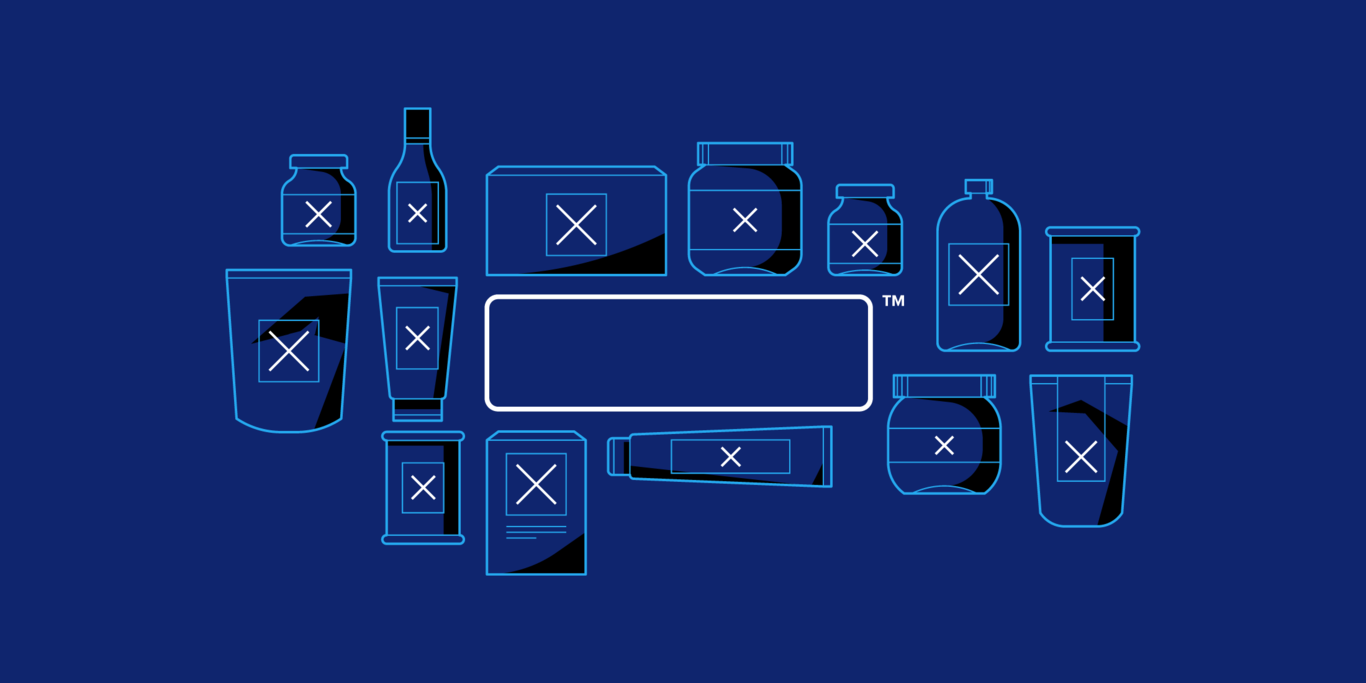Brands Still Matter: Brandless Boom to Bust
The future of branding was no brand at all, and Brandless represented the best the movement had to offer. Until it didn’t. What happened? We share takeaways that no designer or business should ignore.
The future of branding was no brand at all, and Brandless represented the best the movement had to offer. Until it didn’t. What happened? We share takeaways that no designer or business should ignore.
Micah helps businesses craft meaningful connections through branding, illustration, and design.
Not long ago, a rumor spread. Big brands were dying. Out of touch and overpriced, their gaudy packaging smeared like the greasepaint of forgotten fame. The public fawned for a new star, a stark white square illuminating the heavens. Pundits were breathless for Brandless, the eCommerce startup best known for its $3 home goods and minimalist aesthetic. Suddenly, the future of branding was no brand at all, and Brandless represented the best the movement had to offer.
Until it didn’t.
When Brandless unexpectedly closed shop last month, much of the commentary centered on the company’s struggle to communicate its value to consumers. In short, Brandless failed to establish a brand. The irony is obvious, but there are lessons here, takeaways that no brand designer or business ought to ignore.

What Is a Brand? Why Does It Matter?
Brand: A brand is the foundational promise that a business makes to consumers. Everything else–visual identities, websites, marketing campaigns–stems from the promise. If there’s no promise, there’s no brand. If the promise is unclear, consumers will be confused.
Think of the world’s most iconic brands. Nike is passion and performance. Harley is rebellion and freedom. Apple is elegance and simplicity. These aren’t product descriptions, they’re plotlines. With time, consumers come to trust the stories brands tell. Trust frees companies to create expanding universes of sensations, values, and experiences. But there can be no universe if there is no underlying order–no promise.

Brandless attempted to establish an expansive promise from the get-go:
“At Brandless, our mission is to better everything for everyone. We endeavor to make better stuff accessible and affordable for more people. Our mission is deeply rooted in quality, transparency, and community-driven values.”
Compare that to the laser focus of eCommerce giant Warby Parker:
“Warby Parker was founded with a rebellious spirit and a lofty objective: to offer designer eyewear at a revolutionary price, while leading the way for socially conscious businesses.”
The faults in Brandless’ foundation are evident. What’s better? Everything! Who’s it for? Everyone! What is it? Stuff! It’s buckshot branding and a surefire way to bewilder consumers.
A brand promise can’t be pulled from thin air. It must be carefully crafted and tested by people with no vested interest in the brand’s success. One of the best ways for designers to check the durability of a brand is to ask, “Is it clear, compelling, and consistent?”
Clear: Is our promise both specific and easy to understand?
Compelling: Do we have a hook or a unique proposition that will entice people?
Consistent: Can we build everything we do on this foundation, or will we have to switch gears when faced with changes and challenges?
A promise that fails any of these points can’t be trusted. It’s like a cracked tooth. Always achy, occasionally agonizing.
5 Takeaways from Brandless’ Demise
When brands struggle, there’s a tendency to obsess inwardly. Organizational issues are unearthed. Roles are restructured and processes updated. It’s well-intentioned work, but the internal focus can be so intense that the consumer’s point of view is overlooked.
Brandless followed a similar pattern. Despite clever marketing, the imprecision of their brand promise permeated the “stuff” they sold. In 2019, the company responded to lagging profits by appointing new leaders, exploring brick and mortar, and launching a branded line of CBD products with Plant People. Luggage and blenders followed. Consumers scratched their heads.
The bedrock of every brand interaction is: “What’s in it for me?” If the answer isn’t obvious, confusion reigns. Brandless’ downfall reminds us that discombobulated consumers share common questions.
1. Are you talking to me?
A guy walks into a crowded room and says “Hi” to no one in particular. Heads turn. Eyebrows arch. Silence ensues. Ambiguous branding has the same effect. Because of its murky promise, Brandless frequently employed a variation of “everything for everybody” in its marketing. But with each expression of universality, the company undermined its ability to cultivate a core group of people who truly believed that it wanted them as customers.
Takeaway: Brand ubiquity can’t be rushed.
2. What do I buy from you?
Brandless attempted to disrupt the grocery industry and encountered a conundrum. They had too much inventory to be a specialty retailer but not enough to offer the convenience of a one-stop-shop. Worse, shipping made it impossible to fulfill the grab-and-go impulse so easily satisfied by a trip to the neighborhood market.
Takeaway: It’s risky to ask consumers to associate a startup brand with multiple product categories.
3. Is it a good value?
Brandless blurred the line between brand and generic. Doing so blurred the perceived value of its products. The trouble was exacerbated when Brandless started selling hard goods, an area where consumers expect, even prefer, to pay more for the lasting durability of top brands.
Takeaway: Consumers don’t want to work to discern value. They want it to be immediately apparent.
4. What cause am I supporting?
Brandless’ social channels promoted self-care, good vibes, and sustainability. To their credit, the company partnered with Feeding America to help people facing hunger. But for all its virtue signaling, there was no philanthropic cause woven into the brand’s fabric. With so many eCommerce offerings tied directly to charitable organizations, Brandless’ allusions of goodwill sounded nice but didn’t give consumers a specific cause to rally around.
Takeaway: The generosity of cause-based companies should be brand-related, specific, and ongoing.
5. Why shouldn’t I buy from someone else?
Unfortunately for Brandless, other brands do the no-brand thing better. The biggest differentiator Brandless ever had was its $3 price tag. Paired with impeccable packaging, $3 felt like a steal, and it was–the pilfered cash coming from Brandless’ own pockets. Failing to establish a compelling angle beyond price, Brandless lost its chic brand status and joined the white label rat race when $3 proved unsustainable.
Takeaway: If there’s no brand to bolster the perception of value, consumers see products as commodities.
A chance to make a memory is the essence of brand marketing. Steve Jobs

Can Brandless Brands Survive?
Brands evoke emotions. They are intertwined with our needs and desires. Over time, they overtake the impulses that influence our buying decisions. With our 21st-century brand paradigm so firmly established, is there a place for brands that don’t want to be brands? Yes, but they are at a disadvantage.

When consumers look to buy, they are aware of two options: brand or generic. Brandless rejected both descriptions and asked buyers to consider an entirely new category: unbranded goods at above-average prices. Who’s buying? The quality-conscious, not-brand-driven person of means. A rare species, indeed.
To outshine competitors and educate consumers, anti-brands must exert more brand-building effort than their branded counterparts. The novelty of “not-being” isn’t a lasting brand strategy.
In the end, the “future of branding” fell victim to the same brand flaw that’s felled countless others. Brandless sold too many ideas. They were the no-brand, eco-friendly, health food, home goods, beauty merchant that specialized in luggage, wellness, and baby supplies for the working, stay-at-home parent, all for $3–or more in some cases.
Further Reading on the Toptal Blog:
Understanding the basics
Is Brandless going out of business?
Yes. After two and a half years in business, Brandless officially closed its doors on February 10, 2020. Brandless was known for its line of $3 home goods and minimalist aesthetic. A variety of factors (shipping costs, leadership changes, lagging sales) led to its demise.
Is Brandless legit?
Brandless was a legitimate company co-founded by Tina Sharkey and Evan Price. Originally, the company sold a variety of home and healthcare products at a lower price. When the business model proved unsustainable, the company pivoted to more expensive goods, like luggage, and a branded line of CBD oil.
Is Brandless sold in stores?
Brandless was an eCommerce company, but it also experimented with popup stores in New York City and Los Angeles. The popups were meant to drum up attention and excitement around the brand. As the company’s struggles intensified, there were plans to partner with retailers to sell Brandless in stores.
Why is Brandless no longer $3?
Brandless’ $3 price point was never intended to be a permanent fixture in the business. It was a clever way to attract attention, but ultimately, it created an unrealistic expectation among consumers. When the business rolled out additional price points, there was customer pushback.
When did Brandless stop selling food?
During the latter half of 2019 and early weeks of 2020, Brandless’ customers took to its social channels and repeatedly asked when the company would begin selling food again. Around the same time, Brandless attempted to jumpstart stagnant sales by selling higher-priced items like luggage and blenders.
Micah Bowers
Vancouver, WA, United States
Member since January 3, 2016
About the author
Micah helps businesses craft meaningful connections through branding, illustration, and design.


